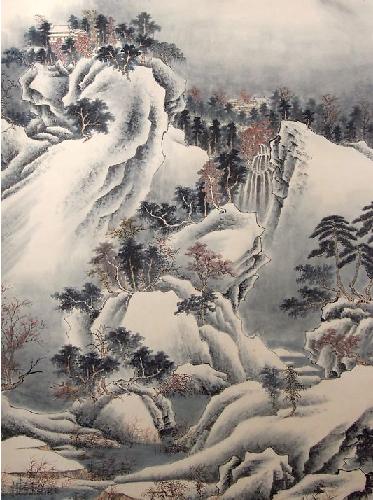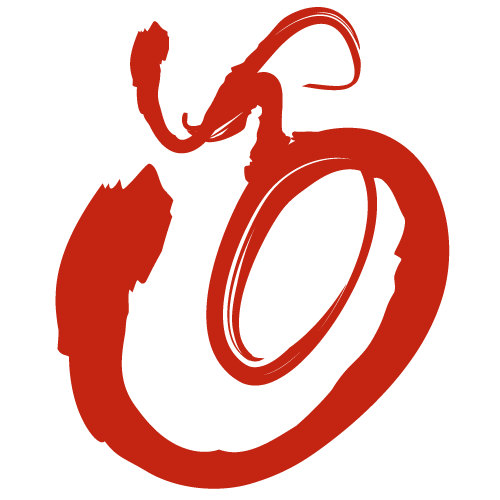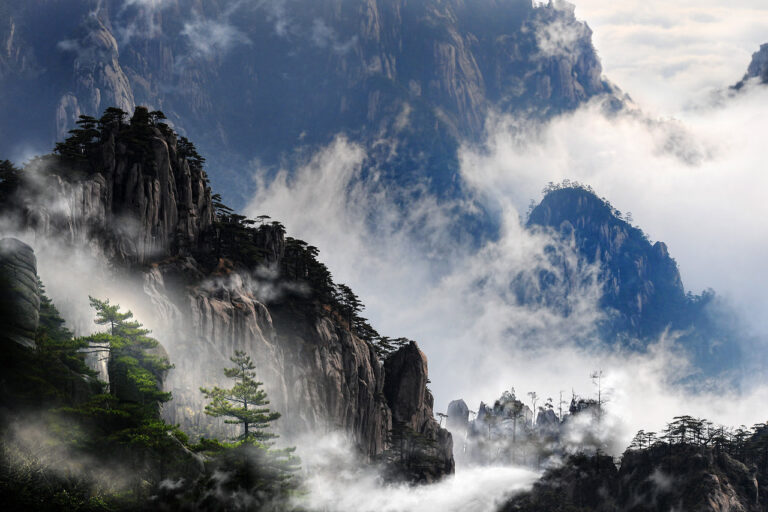The East, the West and Russia
Once Again on the Dichotomy of East and West
The axiomatic fact of any anthropological or cross-cultural study is a kind of double-focused vision rooted in the recognition of «another» and alien humanness which can serve, however, as a part of our proper existence and our understanding of the world (Ricoeur 1977, p. 14). Man as a culture-maker can not be reduced to any given set of data. Encountering other cultures and in a broader sense the very meaning of acculturation are always a personal test calling for self-transcendence. One can not invent a human being; the latter can only be discovered. And only an inexhaustibly diversified world has the quality of being essentially human.
The essence of human existence infinitely surpasses all external images of man. It is the fullness of life in spirit that can only be expressed symbolically. Viewed through the prism of culture this internal, ever symbolical yet always concrete reality represents Tradition, i.e., the eternal continuity of the creative spirit, the absolute Presence which represents complete openness and, therefore, the enlightenment of consciousness. Tradition is rooted in the experience of «suchness»; it is the ontological condition of man’s self-humanizing efforts realized through the knowledge of the internal ruptures in his experience. So within Tradition one becomes human by discovering the non-human in oneself. All cultural traditions refer to the existence of the hidden, internal man — Heavenly Man, Ultimate Man, Greatest Man — who signifies the fullness of being. Tradition does not so much define man as it opens vistas for man; its reality is anthropogenetic rather than anthropomorphic.
If culture, according to W. Dupre’s definition, is «the principle of human co-participation uniting identity and difference» (Dupre 1975, p. 19), then tradition posing as an internal limit of culture represents precisely the limits of communication which make possible any message. An inaccessible God creates the believer. The impenetrable teacher accounts for the existence of the pupil. Silence reveals the meaning of words. Culture proper stands out as the intermediate space, the point of intersection: by its internal sense it is the life permeated with consciousness and consciously lived through; at the same time it makes possible the recognition of this internal reality through external images as well as estrangement realized by the language, norms of behavior, psychological stereotypes, etc. The domain of culture contains the drama of man’s self-knowing exemplified in religion, art, philosophy.
Finally, the forms of the symbolism of culture’s exteriorization define the character of a given civilization. The latter exists by its own laws and can overshadow completely the contents of culture. Civilization relegates to oblivion the inner depth of silence; it commands the speech and it speaks the language of ideology, politics and the technocratic control of the world.
So, tradition, culture and civilization represent three universal layers, or dimensions, of human praxis, with culture occupying the middle, essentially the intermediate, position. The neglect of tradition observed, for instance, in Modern Times can lead only to the widespread imbalance and anxiety so characteristic of modern civilization.
But what can be taken as criteria for distinguishing different types of civilizations and, in particular, the civilizations of West and East? The simplest procedure would be to look at the nature of the above-mentioned epistemological process leading from tradition to civilization. In fact there are only two options: striving for some sort of objective data, and objectivizing the very limits of experience. In the first case reality acquires an ideal and /or empirical character. In the second case the idea of the symbolic depth of experience is preserved and reality gets no privileged, uniquely «truthful» image. One can safely assume that the first option determined the mainstream of Western thought, while reflecting on the limits of reflection has been the main characteristic of Eastern (here viewed as predominantly Chinese) thought.
It would be quite commonplace and yet no less true to say that Western thought, ever since Antiquity, has been anxious to represent reality as a chain of objective truths ultimately reducible to a technological system. It is all too evident now that this tendency was motivated by certain mental attitudes as biased and even prejudiced as all culturally exclusive norms, such as the dogma of the unchanging and monolithic Self and the belief in the complete analogy between reality and language. So Western civilization identified knowledge with the differentiation between object and subject and the absorbation of the former by the latter. The result has turned out to be the complete subordination of human practice to efficiency and the tragic — in the real sense of the word — confrontation of man and the external world.
One should spare the reader from being told how the narcissistic outlook of modern humanity gave birth to its universal neurosis — the story is too fresh and too well-known to be repeated here (Norris 1990). The outcome of this tale, however, is far from trivial for it marks the complete reversal of the original Promethean stance of Western thought. It is not Modern, but essentially Post-Modern: «We can expect the complete exteriorization of knowledge in regard to the knower», — observes one of the chief authorities on the Post-Modern situation, J.-P. Lyotard — «The old principle of acquiring knowledge by means of the cultivated mind or even the individual is becoming more and more anachronistic» (Lyotard 1970, p.7).
The Post-Modernist vision presupposes the loss of the subjective Ego with its fixed perspective and panoramic vision, its urge to distinguish betv/een the visible and the hidden, meaning and appearance. It is the world where, as J.Baudrillard (1994, pp.29-30) puts it, «there is no more subject, no more focal point, no more center or periphery: pure flexion or circular inflexion. No more violence or surveillance: only «information», secret virulence, a chain reaction, a slow implosion, and simulacra of spaces .in which the effect of the real again comes into play».
Evidently, modern life’s center of gravity is shifting from man’s internal space into the exterior realm — the world of appearances, shows and illusions while, paradoxically, his vision itself acquires the quality of finiteness. Life shows itself now as play and that means it moves perpetually within a closed horizon for play needs delimited space in order to exist. The most sublime expression of this play is but the semblance of dangerous action, which is all the more bold and daring because nothing is at stake and man alienated from critical knowledge really runs no risk. It is the time when everything «comes into play» — only to disavow itself.
Eastern thought addresses itself not so much to the contents of experience as to its qualitative presence, the very «suchness» of consciousness; it searches for the very limits of reflection. Consciousness here is neither a tabula rasa nor any sort of container but, rather, a vessel turned upside down, its contents flowing freely into the world. It is a stream flowing absolutely naturally and so its main qualities are emptiness, openness, and translucency or, above all, a mirror-like (non) translucency. What is real for Eastern thought is just an event, i.e. the meeting and, moreover, mutual penetration of two self-transcending, or rather «self-emptying» things. The event realizes itself in the Great Void or Chaos which stand as tentative names or unavoidable metaphors of the inexhaustible plenitude of being, of the omnipresent and forever non-located environment beyond beginnings and ends, ideas and other representations, forms and substances. Needless to say, this abyss of the eternal difference-ing of being is equivalent to the very essence of humanness in the image of the Heavenly Man who infinitely surpasses «all-too-human» qualities.
The nature of reality in Eastern thought, therefore, is not anything substantial that can be communicated, but is communication itself. This is quite a post-modern point of view! The eye of Oriental wisdom is forever «looking within»; it moves exactly by — to quote once more Baudrillard — «implosions», «chain reactions», series of events, one is even tempted to say — by transformations themselves.
That is why to be wise in the Oriental way means to be sensible to the slightest changes in the totality of beings and understand things the way mother and child understand each other — beyond any rational knowledge and even the act of understanding as such! As for appearances, they have the status of «shadows» or «traces» of reality which refer to the hidden force of changes in some obscure, roundabout way. Yet, just like appearances in the post-modern Nietzschean world, they represent all there is — a conclusion that, by the way, served the best apology for culture in Confucian China: the physical universe can indeed perish, but the shadowy existence pertaining to cultural endeavors, the very principle of self-transformation will remain valid even if nothing else exists.
We are dealing here with an essentially symbolic type of thinking similar, for instance, to the discourse on the monads by the great Sinophile W. Leibniz . As G. Deleuze has shown, the fundamental notion ofLiebniz’s monadology is the series, or type, of events which presupposes the idea of the inner or hidden depth of the matter (Deleuze 1988, p.81). It would be useful to remember that according to the Taoist philosopher Chuang-tzu «things are enclosed within each other» (Chuang-zi 1974, p.48). The nature of a thing’s transformation is precisely its reduction to its proper limit or, in other words, its change into a symbolic type. In this infinitely folded world there are no things but only types of things represented by «shadows» — as indestructible and eternal as any type is.
The real heritage of the Eastern tradition is neither ideas, nor notions, nor even any sort of images but the types of experience, or experience typified. The search for those types became the main obsession of Eastern tradition-makers. They found their material and principal source of inspiration in the practice of the ritual with its stylized patterns of behavior. Indeed, the ritual gesture is the enduring, time-resistant act par excellence.

The best graphic prototype for this search was provided, of course, by The Book of Changes, which contains the universal code of transformations. The practice of «reading» this half-graphical, half-literary text which was traditionally the favorite occupation of Chinese literati meant in fact the contemplation of those «fine and delicate» transformations that belonged both to the external world and the inner space of the enlightened heart.
In due course virtually all aspects of cultural practice and modes of behavior in China, from the arts to sexual relations’were refined into such stylized gestures. A good example is provided by the traditional schools of martial art with their fairly complicated sequences (tao lit) of normative movements which signify the whole cosmological process: one starts with the Non-Limit ( wu-chi) anticipated by primordial Chaos and, reproducing the typified qualities of the Life Force, accomplishes the infinite richness of being in the Great Limit (tai chi). The main objective of such training is the heightening of sensibility achieved through the «emptying of the heart». Chinese self-cultivation is aimed at the supra-sensical intuition brought about by the workings of the life-force {qi}. It is essentially the intuitive knowledge not of any subjective actions or objective things but events being dispersed in the infinitely complex web of relations with their interplay of yin and yang factors,
What is the real prototype of these repertoires of typified actions, or rather, events that constitute the symbolic matrix of Chinese culture? Evidently, we are dealing with something that transcends the scope of subjective thought or will. This pattern of enlightened behavior is based on the principle of plurality derived in fact from corporeal existence. Being awakened to one’s body means to unveil one’s habitus, the pre-conscious foundations of one’s own personality which, according to P. Bourdieu, are «program rooted in us, a generative principle of all actions» (Bourdieu 1974, p.499). The union of consciousness and body through the mediation of qi is the very core of the Chinese tradition of self-cultivation. The all-pervading Chinese ritualism is in fact the articulation of this preconscious pattern of life, that is nevertheless accessible to the enlightened heart.
The workings of Tao, presumably a cosmic non-changing principle of all changes, turn out to be the ground of human sociality. But it is a sociality of a special, so to speak «vertical» kind, representing the continuity of moments invested with the same quality of experience. This type of sociality virtually neglects the external aspects and «horizontal» ties of personality. So the founder of the school is the contemporary of the school’s pupils in all generations. It is not by chance that in China the term «type» (pin) was originally applied to outstanding persons endowed with authority. In fact the school as a succession of generations of pupils reproducing the inner, or spiritual, image of the master has proved to be the most adequate form of the social existence of Tradition in China. The school as a social medium is nothing but the typefied form of its Founder’s existence. As a consequence, there could be no compatibility and, consequently, no rivalry between individual schools. As an old Chinese saying puts it, «Heaven is impartial to all schools».
The inner driving force of Tradition’s development is the striving to discern still more delicate nuances of perception, to clarify more and more the differentiating faculty of consciousness. But typefied experience itself, being a representation of the finiteness of existence, is drawn irrevocably to its very limit. Finally it dissolves in the seamless web of the Void. So, cultural type-forms, born as projections of the primordial Chaos finally slip into the ocean of that very Chaos. Yet this Chaos is esthetically perceived and processed by the human will and consciousness. Both kinds of Chaos become idenucal not through any formal analogy but in a way proper to the self-elusive nature of Chaos itself — by their very fulfillment in the act of self-negation. In the Chinese tradition culture and nature are united through their limits in this intermediary region of life renovated, or transformed. This accounts for such a peculiar feature of Chinese thought as the basic unity of nature, life and art.
The circular movement from the primordial Chaos of No-Limit to the secondary Chaos of Great Limit, i.e. the Chaos of esthetically liberated life, solves the problem of mediation between nature and culture. But this solution is not without its price, for the non-differentiation of the two kinds of Chaos justifies the presence of mystery in any awareness. For masters of Chinese wisdom reflection from the start confronts its own boundaries.
It is here that we come across the crucial limitations of Chinese thought or, indeed, of any attempt to establish the philosophy of tradition. Stated in its plainest terms, this limitation amounts to the impossibility of safeguarding by rational means the difference within non-differentiation. In terms of phenomenology it means the oblivion of difference between the typified images worked out by Tradition and the data of natural perception. Where does this confusion come from? The fact is that the typified Void of the secondary Chaos (or the world of Great Limit) is filled by the all-too-general, too coarse images that represent only semblance, in other words approximations or generalizations of actual types, for the latter are much too numerous and concrete to be represented adequately. The memory of the types is kept alive by harsh training in schools, but for the outsider it is all too easy and tempting to confuse these highly typified forms of experience with so called «natural experience», which in fact does not belong to the domain of culture. Historically, traditions knew of no other way to combat this encroachment on their symbolic body but to prescribe to certain chosen type-forms the status of a canonical image, the dogma of the school — no doubt, a poor remedy for dealing with the desire to rationalize tradition.
In fact, both in Europe and in China at the dawn of Modern Times we can observe in matters of artistic and cultural style an amazing coexistence or even mixture of two widely divergent attitudes: an attention to natural details, on the one hand, and a taste for sophisticated mannerism on the other, so that natural images are often elegantly woven into subtly styled compositions having a purely decorative character. In both cases — i.e. in the European baroque style and the Chinese art of the 17th century —a love of the bizarre and grotesque, a willingness to succumb to the charms of fantasies and dreaming were the signs of the last and desperate battle for preserving the symbolic world of Tradition. The grotesque and eccentric were the most powerful means to dissociate what had been already fused together in the eyes of many — the symbolic and empirical/rational qualities of experience. ,
The fate of the «Wild-Ch’an» movement represented by Li Zhi and other radical non-conformists at the end of the Ming dynasty demonstrates well the limitations of this re-evaluation of tradition. For Li Zhi’s iconoclasm pursued in fact two incompatible aims: on the one hand, it attacked the conventional identifications of ideology and history, revealing the inner inconsistencies of formal reasoning and, on the other, it called for a return to the pretended «bare facts» of life and this endeavor could only impose irrational notions on reality, thus opening the way to the most totalitarian ideology possible. Li Zhi’s non-conformism in fact laid the ground for dictatorship of the modernist type (de Bary 1970, p.208).
The reassessment of tradition in late imperial China produced a new stage of Chinese cultural history: the affirmation and continuation of Tradition by non-traditional, i.e., non-symbolic, means. It can be called the post-traditional stage of Chinese history since tradition continued to exist, so to speak, as a limit of experience, a non-objectified condition of thought. In social terms it became localized in very closed circles of sects or schools (Maliavinl989).
It would be interesting to compare the fate of the Chinese Tradition with various local versions of Far-Eastern civilizations. The most striking example is provided by Japanese culture. The latter, as far as Chinese influence is concerned, was formed by the conscious projecting of the heritage of Chinese Tradition on social reality. As a result, the Japanese perception of life is thoroughly aesthetic and is dominated, moreover, by the idea of the illusory nature of being. While in China the symbolism of the Great Void did not acquire any fixed forms, the Japanese always searched for direct and literal (albeit, of course, illusory) representations of symbolic reality — let it suffice to recall here the Japanese practice of painting a picture with one stroke of a brush (a rejoinder of the Chinese idea of painting as a symbolic «single stroke»), or the style of the Japanese rock gardens. Reality for the Japanese should be an elaborate mask, or a shadow, of reality — elaborate precisely because it remains unnoticed. It is not out of the simple desire to stress his cultural peculiarity that the Japanese interlocutor (presumably a real person) of Martin Heidegger talks of Japanese culture’s decline in terms of its tendency «towards realistic representation» (Heidegger 1959, p.21) And yet that was the only path of development for Japanese culture.
Contrary to the Chinese model of culture, the cultural symbolism of Japan has become a part of its ideological interpretation and life itself has been treated by the Japanese as the continuation of art. The Japanese mode of life is in fact the idea of a perfectly elaborated and «displayed» life. To violate the prescribed pattern of life’s display was tantamount to shattering the very foundations of reality. Any attempts of that kind were censored as a crime as was indeed the case with innovations introduced by the influential master of the Tea Ceremony, Furuta Oribe (died 1615), who tried to add some mannerist elements to the seemingly naturalistic style of the ceremony (Berque 1985,p.285).
In the final account type-forms have not become an organic part of Japanese culture and the forms borrowed from China have taken on in Japan quite different functions — mostly ideological or pragmatic. Such was the case, to give but one example, with the Japanese tradition of martial art. For instance, the terminology of Miamoto Musashi’s Discourse of the Five Rings, a classical treatise on the Japanese art of swordmanship, merely reflects the ordinary usage of words and has very little in common with the symbolical language of the Chinese wu shu, which is related to the cultivation of «inner energy».
Due to its essentially reflective and exteriorized nature Japanese traditional culture served as a powerful impetus for molding the national culture and nationalist ideology. Even now Japan remains an example — practically unknown in the West — of an ideology based on reflected cultural patterns and thus one that is deeply rooted in habitus of Japanese people. This is one of the main reasons for Japan’s surprising cultural stability. In China, on the contrary, the non-objectified nature of tradition’s existence in society did not allow for a fast and easy passage to national culture.
One can say that Japan represents a regional version of Far Eastern civilization, more or less akin to that of Korea, Taiwan, Hong Kong and even Singapore, while mainland China exemplifies the continental, «deeply-rooted» way of cultural development.
How does the issue of the confrontation between East and West appear in the light of the cultural typologies suggested above? At first sight one gets the impression that the East quite readily succumbed to the «Western challenge». At least the response of the East, though fairly passionate at times, seems on the whole to have been quite weak conceptually. And we know already the reason for that: the gradual but irrevocable merging of symbolist and naturalistic perspectives of cultural vision. Yet this fusion was never complete and this accounts for the problematic and limited nature of the East’s modernization which has not gone much further than the sphere of technological systems and related modes of thinking. The tendency on the part of Eastern civilization to accept the premises of Western thinking with their civic implications and peculiar naturalistic style in art has turned out to be just a transitory, ephemeral stage on the way leading beyond Modernity. As D. Hall (1991) has pointed out, the East has long ago been prepared for the Post-Modern Age. We can now go further and say that it is precisely Post-Modernity that constitutes the proper domain of the Eastern Tradition. Modern technology has only provided the technical means for unlimited reproduction of the post-modern «hyper-real» world discovered long ago by Chinese novelists and horticulturists, as well as Taoist and Buddhist philosophers of that country.
Moreover, it is precisely Post-Modernity which is problematic for the West just because it completely undermines the foundations of the Western classical tradition. Most of the western literature on Post-Modernism is permeated by hesitation, doubt and ambiguous questions like: how can a metaphysics beyond metaphysics be possible? In this ocean of endless irony hardly any sense of optimism can be discerned.
At the turn of this century the Russian writer D. S. Merezhkovsky (1992, p. 18) said:
While nowadays the Chinese wish to imitate Europeans, the time will come when Europeans will look to imitate the Chinese.
Now it seems that this prophecy is beginning to come true.






